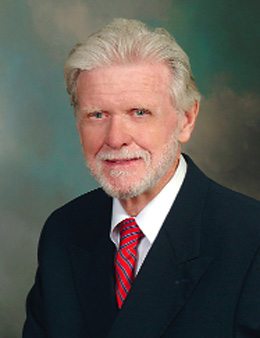SUBROGATION
An untapped revenue source
By Michael J. Moody, MBA, ARM
With more than 5,000 captive insurance companies operating worldwide, it is clear that this alternative risk financing technique has proved itself. Captives have been formed for all lines of coverage, often in response to affordability or availability issues in the commercial insurance market. Numerous domiciles have enacted legislation to regulate the growing number of captives. At this point, virtually every industry segment has become involved with the captive movement in one way or another. All in all, captives are allowing their owners to better manage and control their insurance programs.
As captives have grown and matured, many have begun to look for ways to improve their overall financial performance. While there are a number of ways to do this, one underused method should be investigated. That method is subrogation and, according to John O’Brien, JD, CPCU, CLU, an attorney and captive insurance consultant who specializes in subrogation, commercial insurers have found that it represents a significant revenue source.
He points out that subrogation has become a big business over the past few years, and many insurers have turned their subrogation departments into profit centers. Now O’Brien believes that it is time for captives to turn their attention to subrogation and start to “take advantage of the subrogation potential from their claims, similar to what commercial carriers have done.”
Subrogation basics
According to Webster’s New World Finance and Investment Dictionary, subrogation is “a legal process in which an insurance company pays for a loss and then seeks to recover the money from another party who is legally responsible. The responsible party may be the person who caused the damage or that person’s insurance company. The person who is owed the money assigns his or her rights to insurance benefits to the insurance company that has paid the claim.”
Interestingly, the concept of subrogation is not new; it was recognized by U.S. courts as far back as 1782, and in the U.K. even before that. Although the basic concept is relatively straightforward, subrogation is a highly technical area of the law.
O’Brien points out that insurance companies have realized the importance of subrogation, and most have departments staffed with highly trained specialists to handle this function. One reason that a specialized group is required, says O’Brien, is the complex insurance regulatory environment and the fact that the specific guidelines and procedures governing subrogation often vary widely from state to state. Given this reality, he observes, “It is difficult to keep abreast of the various state regulations.”
All too often, captives have failed to take full advantage of subrogation opportunities. Many captives have left to their third-party administrator the pursuit of this important source of revenue. “This is a mistake,” asserts Erik Stremke, client development manager for Subrogation Division, Inc. (SDI) He points out that typically TPAs are defense oriented and seek to protect their client’s assets, “meaning their primary objective is to adjudicate claims and close files.” Successful subrogation requires a plaintiff mindset, and this is directly opposed to the traditional role of the captive’s TPA, Stremke notes.
In contrast, he says, “Specialized subrogation firms such as SDI are more offense minded. Their role is to actively pursue recovery of damages sustained or paid for by their client that another party was negligent for. Because captive insurance companies are typically better than average risks, a higher percentage of their claim payments can be recovered than from commercial insurers.” By not focusing on subrogation, Stremke points out, “Captives lose a key part of the benefit of their generally superior risk management processes.”
Numbers tell the story
According to Stremke, the National Association of Subrogation Professionals (NASP) has developed industry benchmarks that provide some meaningful insight into the savings that are available via subrogation. For example, subrogation of auto collision claims represents about 25% of total paid losses for traditional insurers, while property claims subrogation can net 7% to 10%. For workers compensation, Stremke says, recovery via subrogation averages 5% to 7% of total paid losses.
These numbers, Stremke believes, may be higher for captive insurers. He points out that the averages cited above reflect the general insured population, but captives are different because they typically have well-established safety and loss control programs. It follows, he says, that if employees of a captive owner are involved in a claim, there is a strong likelihood that the loss was caused by a third party. This would make the subrogation potential higher for captives than for traditional insurers.
As noted above, the lines of coverage that are most frequently involved in subrogation are auto collision and property coverage. Stremke observes that recently, general liability and professional liability, particularly medical malpractice, have been receiving significant attention with respect to subrogation. He adds that, with the recent trend toward forming captives to be used in conjunction with high-deductible workers compensation programs, the subrogation potential is significant, particularly in these three areas:
• Product liability—A manufacturer’s faulty product is involved in an employee accident
• Vehicle incident—A third-party driver is involved in an auto accident with an employee
• Other organizations’ premises—Slip and fall potential at off-premise sites.
Although the NASP benchmarking survey indicates that workers compensation subrogation recovery for traditional insurers represents about 5% to 7% of total paid losses, Stremke believes that the percentage for captives could be significantly higher, resulting in a measurable reduction in the loss ratio for the captive’s owners.
Timely and affordable
The subrogation process offers yet another valuable benefit for captive owners, according to O’Brien: the timely settlement of claims. A popular method of resolving subrogation claims today is mediation and arbitration, and O’Brien says these methods can expedite the settlement process. Through the use of various arbitration forums, claims often can be filed and heard within 90 days.
What’s more, O’Brien says, cases can be submitted to one of these forums for as little as $45. He explains that property forums can accept claims up to $100,000 with binding decisions and payment made within 30 days. He adds that special arbitration forums can resolve claims up to $250,000, and claims can be concluded within 120 days. Because captives are in fact insurance companies, O’Brien says, they are eligible to submit cases to the various forums. Over time, he comments, these forums have proved to be “an efficient and cost-effective method for recovering subrogation dollars.”
While maximizing revenue through effective subrogation certainly has direct, tangible results, Stremke points out, “It is not the only benefit that can be derived from a professional subrogation program.” He explains that subrogation reduces the captive owner’s overall loss ratio. Typically, Stremke observes, “reducing the loss ratio will affect many other related costs such as reinsurance and fronting fees.”
Furthermore, he says, an effective subrogation program can be an aid in developing forecasting and actuarial models for the captive. Additionally, as a captive is going through the formation process, it may be able to use previous, now closed claims that the prospective captive paid through self-insured retentions and other risk retention mechanisms.
“These closed file reviews create a source of funds that is truly found money,” Stremke asserts. “This can amount to anywhere from $250,000 to more than $1 million just from closed claims. That money can be used to capitalize the captive rather than diverting other internal resources or obtaining outside financing.”
Summing up
As the captive movement grows and matures, captive owners are beginning to establish a more formal approach to many of their operations. A professional subrogation program can provide a ready source of ongoing additional revenue, as well as a cash flow boost of “found money” from a closed file review.
Professional subrogation service firms can help a captive achieve optimal results in this endeavor. These services usually are provided on a contingent basis and involve no out-of-pocket costs for the captive owner.
Captive managers, third-party claims administrators, and insurance brokers will want to consider using a value-added service like professional subrogation, which can generate revenue in a timely manner and at an affordable cost. Says O’Brien: “It is important to educate the captive community to leave no stone unturned” as they analyze the potential for recovery through a subrogation program. At the end of the day, Stremke says, “These kinds of services can assist in making the business case for captive formation.”
|
|
| |
 |
| |
“Special arbitration forums can resolve (subrogation) claims up to $250,000 and can be concluded within 120 days.”
—John O’Brien, JD, CPCU, CLU
Attorney/Captive Insurance Consultant
|
| |
 |
| |
“Closed file reviews create
a source of funds that is truly found money. This can amount
to anywhere from $250,000 to more than $1 million just from closed claims.”
—Erik Stremke
Client Development
Subrogation Division, Inc. |
|